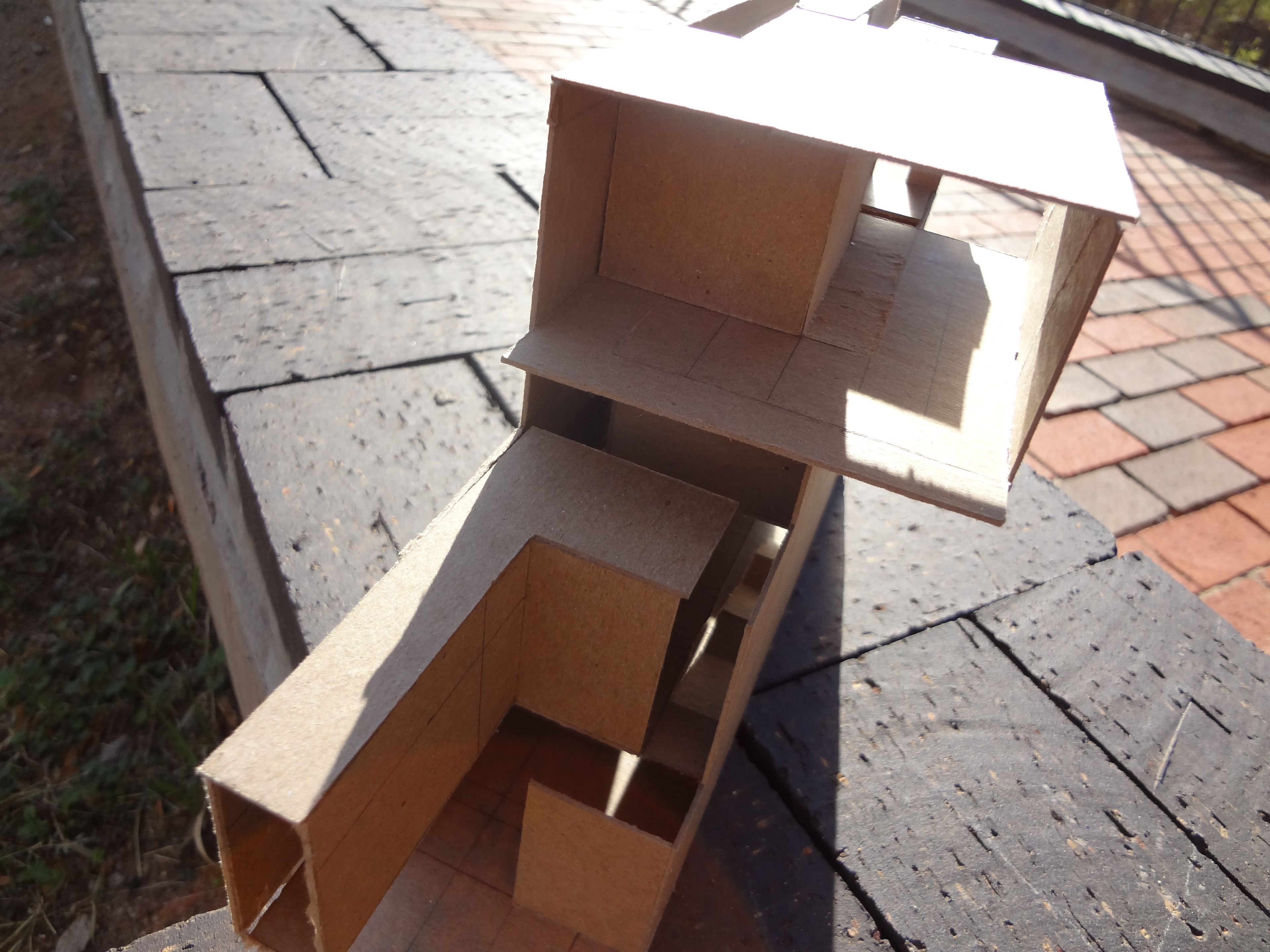Light and shadow can be understood as building materials just as much as concrete, steel, and glass. The objective of the project for this studio was to analyze a fictional, nameless site through the behavior of light, as well as test space typologies on an urban condition. The site contained a particularly narrow footprint, a 16-foot grade change, and relationships to varying data including a canal, street, and contextual buildings. The program for the Light Gallery consisted of three exhibition spaces (two interior, one exterior), a lobby area, restrooms, offices, and storage spaces.
Using the effects of direct and indirect lighting, the Light Gallery works to emanate the concept of shift in three ways: light shift, volumetric shift, and circulation shift. These three communications produce exhibition halls that both highlight and accent the existing variation in levels within the site context.






By placing the staircases and landings in several different locations across the site, program and circulation become a continuous system that promotes traversal through the entire space. Differences in exhibition spaces occur as a result of interruption—by placing secondary program in the middle of the gallery. This then works to create dynamic displays of light and varying experiences throughout the day. Volumetric and planar shifts in floor levels and program spaces create protrusions and extrusions on the exterior that create energetic elevations, as well as an interior condition that allows guests to view the effects of light from various levels.
Axonometric Light Diagram, view from southwest.
This project was completed under the instruction of Victoria McReynolds at the College of Architecture at Texas Tech University.
Fabrication of the studio site model and supplemental studio elements by Bonilla, Brennan, Clifford, Dumas, Edwards, Freres, Nguyen, Oliver, Pacheco, Petty, Rivera, Serna, and Sprinkle. All other work and images produced by A. Pacheco.
All images are owned and retained by McReynolds, Pacheco, and the Texas Tech University College of Architecture.